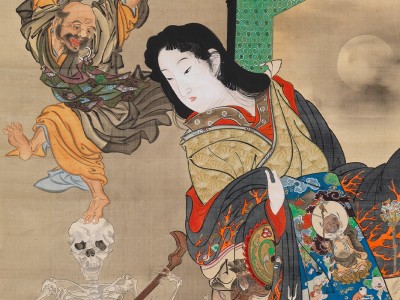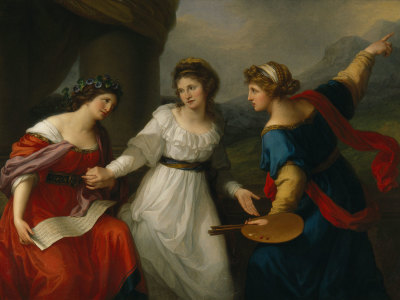
Rebecca Salter PRA, Untitled AG48, 2014.
Gouache and pyrography on japanese paper. 930 mm x 1190 mm. © The Artist. © Photo: Royal Academy of Arts, London.
This image is not available to download. To licence this image for commercial purposes, contact our Picture Library at picturelibrary@royalacademy.org.uk
Untitled AG48, 2014
Rebecca Salter PRA (b. 1955)
RA Collection: Art
Rebecca Salter’s work Untitled AG48 was created from repeatedly burning Japanese paper with a heated tool to achieve “thousands of disjointed little lines”. The short burn marks unify but have a subtle tension suggesting movement.
Untitled AG48 is made on Japanese paper, which is very thin and, as Salter discovered, burned particularly well. She layered Japanese paper on top of a thick Western backing paper and burnt marks on the top sheet which also burnt through to the surface of the sheet below. They therefore had identical marks. She then flipped the top sheet of paper and glued it down so the marks are in competing directions, giving a rippling sense of movement. Salter states: “I almost think it’s like an underlying magnetic field or some geological power that you can’t necessarily see but you can see it sort of vibrating below the surface”. Before burning onto the sheet of paper she stencilled white gouache in shapes that Salter describes as “starbursts”.
She continues, “A lot of the work I’m starting on now is repetitive, which is very dull for some people, but not for me. Each one of these marks is done by hand. People would say, couldn’t you get a machine to do it? But you can’t. Well, you could but it would be dull. It’s the fact that every single mark and the decisions made are organic… it’s almost like a murmuration actually. Those marks almost happen naturally as you’re working. The lines all end up becoming bunching together”.
When Salter heard a radio programme about Stravinsky’s The Rite of Spring in 2017, she saw similarities between her drawing and the famous chord from the music. She explains that the chord, like her drawing, has “a finished layer and then two layers that are subtly apart but just enough to create a sort of energy: a dissonance”.
The work is naturally monochromatic due to being created from burn marks, although as Salter explains, “interestingly, your eye, because of all the brown marks…actually colours the paper”. This natural palette reflects her inspiration drawn from Japanese ceramics and ink drawings.
In 1979, after leaving the Bristol Polytechnic as an art student, Salter received a scholarship to attend an art school in Japan. She was interested in discovering a new approach to art, one that was wholly unfamiliar to her. It was in Japan that she transitioned from working in ceramics to drawing and painting.
“Most of my contemporaries wanted to go to New York; that was still seen as the place to go if you really wanted to make it. I had no idea why, but I just decided to go in the opposite direction. It was very interesting, it stays with me now… I realised how incredibly Eurocentric my education had been and it was just very interesting … to see Western art history from somebody else’s viewpoint but also to engage with a different art history”.
Salter explains that the traditional focus of creating art in Japan has been more concerned with “making and doing things physically, rather than completely intellectually”. She relies heavily on experimental intuition: “it’s like a journey, you work and feel your way through it and it’s only when you’ve finished that you see if it works or not”. Salter sees her work as “calm” and “meditative” as she engages in a process of illustrating “minor differences” that have the power to suggest animation, “it’s not ‘canvas on an easel: stand back’, it’s a very different way of working, and that came from Japan”.
Salter’s titles stem from her system of using sequential letters and numbers.
Quotes from unpublished interview with Rebecca Salter RA 2017
Object details
930 mm x 1190 mm
Start exploring the RA Collection
- Explore art works, paint-smeared palettes, scribbled letters and more...
- Artists and architects have run the RA for 250 years.
Our Collection is a record of them.



